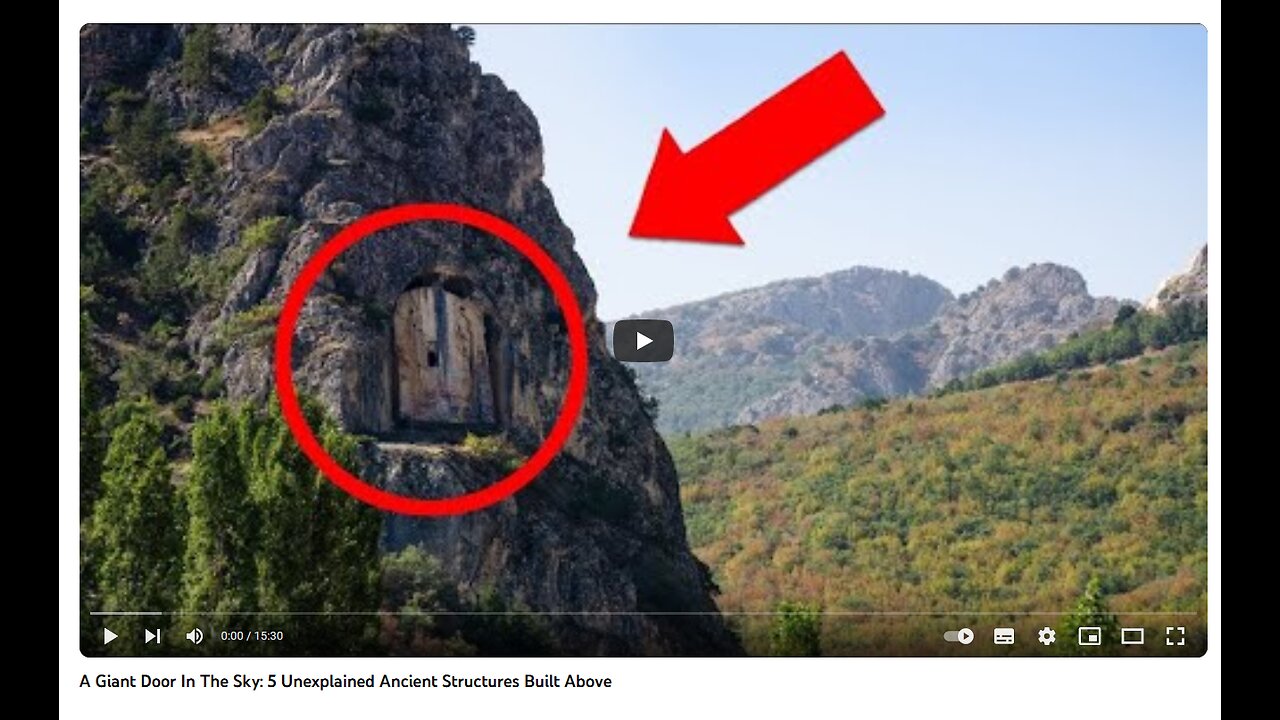Premium Only Content

Gigantyczne drzwi na niebie: 5 niewyjaśnionych starożytnych budowli zbudowanych na górze
The statues are believed to stand guard over the royal tomb of King Antiochus I of Commagene, whose burial dates back to the first century BC.
But was a king really buried in this place?
King Antiochus I, who ruled the Kingdom of Commagene from 70 BC to 36 BC, hailed from a lineage blending Greek and Persian roots. He claimed descent from Alexander the Great through his mother and Persian King Darius the Great through his father.
Antiochus had a firm belief in the gods and a strong connection to religious customs. In 62 BC, he commissioned the construction of a sanctuary adorned with towering statues, their heads alone measuring nearly 7 feet in height. The statues were envisioned as guardians for his tomb, and the grandeur of this site was designed to immortalize and deify him.
A monumental mound at the summit is believed to cover the tomb of King Antiochus. It consists of broken rock and spans a diameter of 475 feet, featuring two terraces.
Each terrace showcases a row of diverse statues, embodying Antiochus's reverence for Greek and Persian-Anatolian religions. These statues depict Greek gods like Zeus and Apollo alongside Eastern counterparts like Oromasdes [Oh-roh-MAZ-dees] and Mithras.
Lion and eagle statues flank each row, symbolizing royal authority and divine guardianship. Finally, there is a statue of the king himself.
On the western terrace, a lion statue is set amidst a celestial arrangement, representing Jupiter, Mercury, and Mars. It's believed to depict the sky on July 7th, 62 BC, potentially marking the sanctuary's construction date.
The site has been said to have been the space for ceremonies linked to the astronomical and religious nature of the statues.
What meaning is to be conveyed by such astronomical structures in a tomb intended to be the place of worship of a king?
Antiochus had a strong interest in astronomy, particularly of an esoteric nature. This interest led him to initiate a reform of the calendar system. He aligned the Commagene year, which was based on the movements of the sun and the moon, to the Stars of Sirius and Orion, known to be the basis of the Egyptian calendar.
Before the king departed this world, he instructed his people to carry out celebrations and festivities every year after his death. Priests assigned by the king made offerings and sacrifices to honor him.
However, this place fell into oblivion as the centuries passed. It was not until 1883 that German archaeologists rediscovered it for the modern world.
In the twentieth century, subsequent excavations were carried out, but the tomb of the king has never been found. Nevertheless, this mountaintop site is still believed to be the place of his burial.
The sanctuary, now a UNESCO World Heritage site, continues to lure the curious and the scholarly, its stone sentinels silently guarding the mysteries of a king's eternal repose...
-
 1:31:08
1:31:08
I_Came_With_Fire_Podcast
8 hours agoCheck Fire: God Bless Charlie Kirk
86.7K24 -
 1:13:35
1:13:35
Glenn Greenwald
10 hours agoCharlie Kirk Assassinated; NATO Alleges Russian Drones Flew Over Poland, and More | SYSTEM UPDATE #512
284K296 -
 1:46:28
1:46:28
Badlands Media
1 day agoAltered State S3 Ep. 45: The Assassination of Charlie Kirk
160K28 -
 8:56:53
8:56:53
Dr Disrespect
17 hours ago🔴LIVE - DR DISRESPECT - THE FINALS - NEW SEASON 8 LAUNCH EVENT W/ THE SHOTTY BOYS
281K11 -
 27:00
27:00
BonginoReport
11 hours agoRest In Peace Charlie Kirk - Nightly Scroll w/ Hayley Caronia (Ep.131) - 09/10/2025
261K410 -
 1:20:06
1:20:06
Kim Iversen
12 hours agoRIP Charlie Kirk: When Words Fail, They Reach for Guns
186K341 -
 2:47:04
2:47:04
DDayCobra
13 hours ago $18.29 earnedCharlie Kirk SHOT
159K63 -
 1:14:30
1:14:30
Redacted News
12 hours agoBREAKING! CHARLIE KIRK SHOT BY ASSASSIN IN UTAH, TRUMP CALLS FOR NATIONAL PRAYERS
335K532 -
 3:50:27
3:50:27
Right Side Broadcasting Network
18 hours agoLIVE REPLAY: Latest News from the Trump White House - 9/10/25
380K102 -
 1:12:05
1:12:05
vivafrei
15 hours agoLegacy Media is the Enemy of the People! Israel Stikes Qatar, U.S., Gets Mad! AOC So Stupid & MORE!
204K98